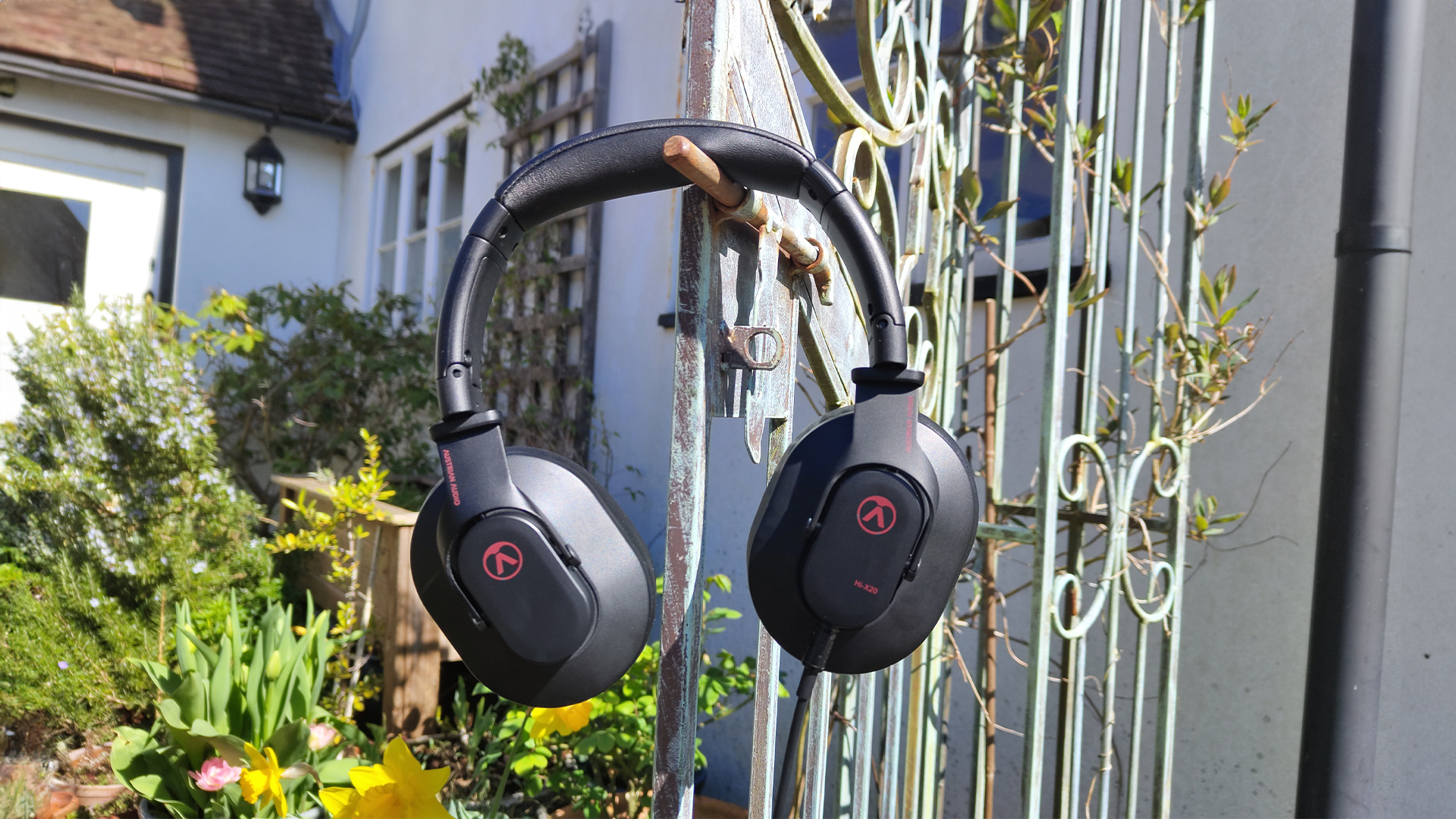What Hi-Fi? Verdict
The McIntosh MA9000 is a hugely capable, fully featured powerhouse with easy-going sonics
Pros
- +
Unfussy musical character
- +
Huge power reserves
- +
Fine build
Cons
- -
Not the most transparent
- -
Needs lots of shelf space
Why you can trust What Hi-Fi?
Everything about McIntosh’s MA9000 integrated amplifier is super-sized, from its 46kg weight and 300W per channel power output to its baby hippo-sized frame.
Even the spec list is generous, packing a comprehensive mix of analogue, digital and phono connections. This earnest attempt to cover all bases doesn’t come cheap, but this kind of quality never does.
Features
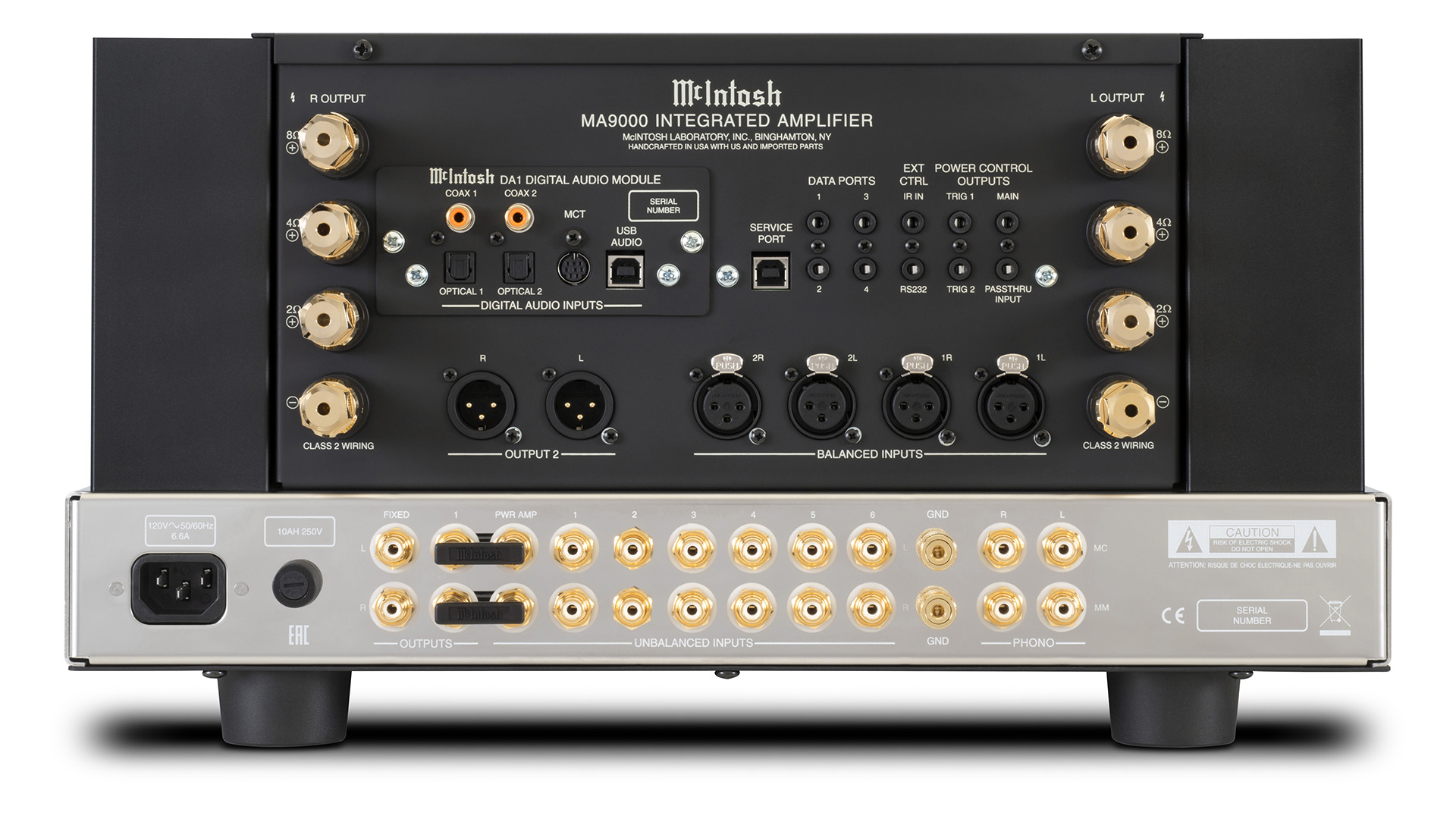
Few integrated amps look as imposing as this. At 24cm tall and 56cm deep, it has the size to make even our reference Burmester 911 Mk 3 power amplifier look modest. Add McIntosh’s trademark bold aesthetics with the black glass front panel and blue-lit power meters and you have something that grabs attention regardless of surroundings.
There’s plenty of substance behind that show though. A large part of that spine-stressing weight comes down to the company’s use of autoformers between the output stage for each channel and the relevant speaker.
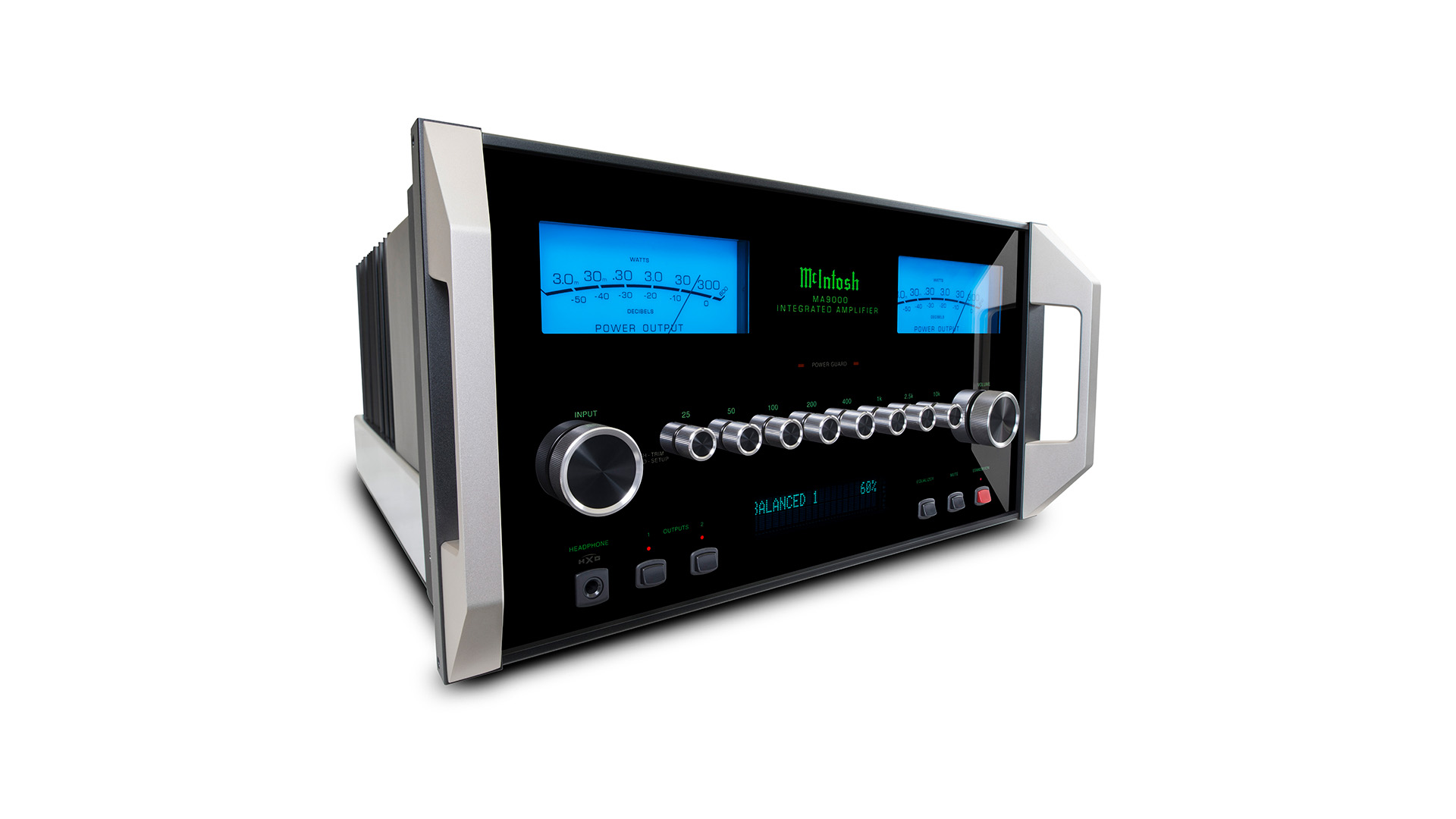
Power output 300W per channel
Impedance 2, 4, or 8ohms
Sensitivity Phono (Moving Coil) 0.30mV
Sensitivity Phono (Moving Magnet) 3.0mV
Dimensions (hwd) 24 x 44.5 x 56cm
Weight 45.8kg
This kind of thing is common in valve-based designs, but unusual in transistor circuits. McIntosh does it to ensure a more efficient transfer of power between the amplifier and speakers. This puts less stress on the electronics and makes the amplifier more load tolerant.
Look around on the back panel and you’ll notice dedicated speaker outputs for 2, 4 and 8 ohms speakers – that 300W per channel power figure stays consistent regardless. While matching the output terminals to the nominal impedance of your speakers is a good place to start, it’s still worth experimenting. In our experience, the difference in sound between the outputs can be significant, and the correct option comes across as obviously more balanced.
While checking out the nicely made multi-way speaker terminals, it’s hard to miss the MA9000’s impressive connectivity. It feels like McIntosh has tried to include every input a potential user is likely to need.
There are no less than eight line-level inputs, two of which are balanced, alongside digital connections in the form of a USB, two opticals and a pair of coaxes. The USB is compatible with files up to 32-bit/384kHz as well as DSD256 streams, while the others are limited to 24-bit/192kHz PCM.
There’s also a connection called MCT – a proprietary McIntosh digital input that can accept a DSD signal from a suitably-equipped source. It’ll also work with CD-spec 16-bit/44kHz music files.
Vinyl fans aren’t forgotten either, as there are individual inputs for moving magnet and moving coil cartridges. There’s a decent range of adjustments as far as cartridge loading goes, so we think the MA9000 should prove comfortable with all bar the most extreme of cartridge designs.
The MA9000’s pre and power sections can be split and used separately, and there are also line-level outputs to feed into a recording device. Add the front panel headphone output and it’s hard to criticise what McIntosh has done here. If you’re looking for a do-it-all integrated high-end amp, this could be it. We can’t see it getting caught short in any two-channel set-up.
Build
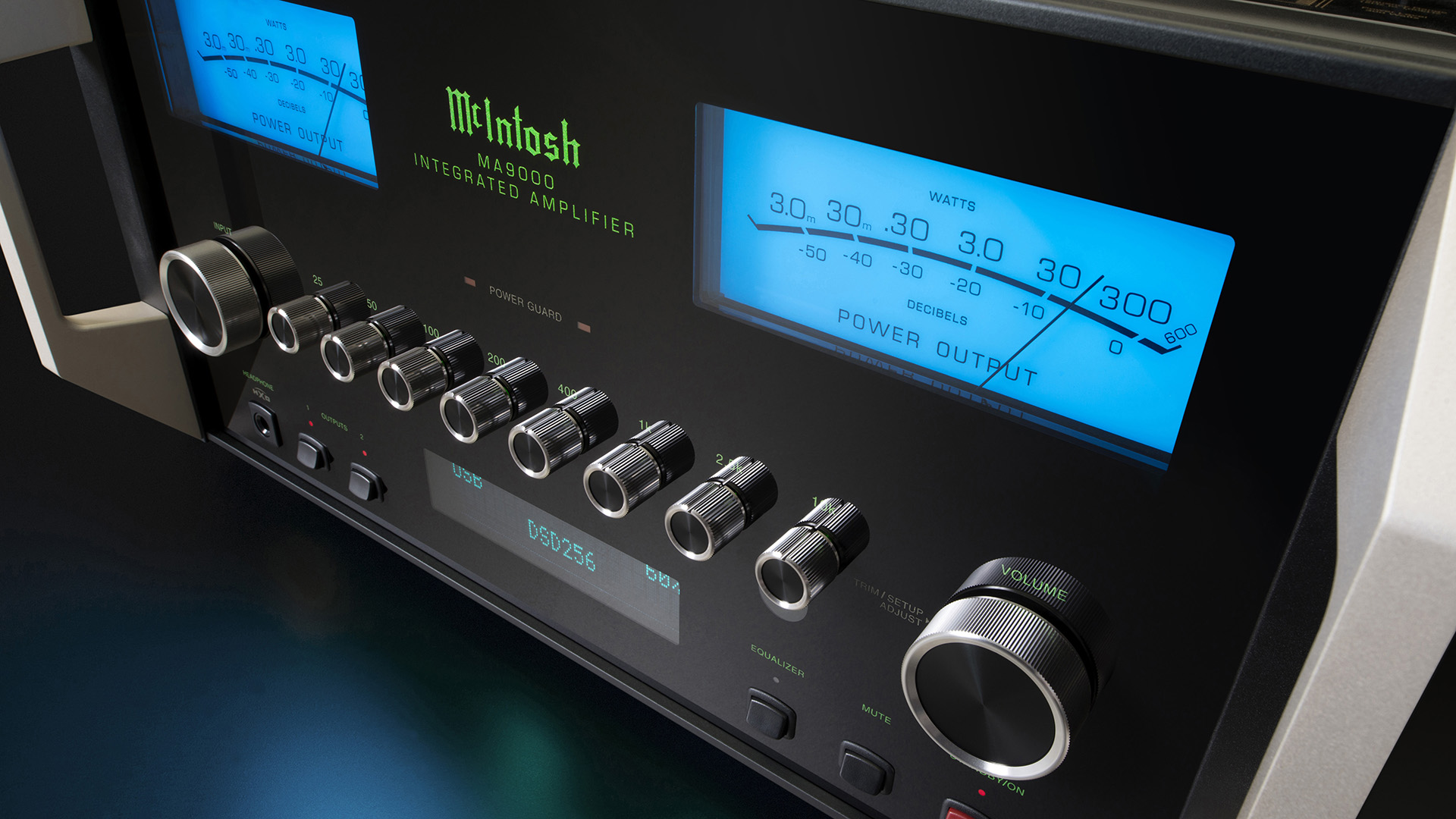
Build quality and attention to finish is as good as the elevated price demands. While we wish the front panel dials had a more luxurious feel, there’s little to actually complain about here.
The front panel display is large enough to be useful, and makes setting up the amplifier a breeze. That set-up governs all aspect of the MA9000 from cartridge loading, input naming and display brightness all the way to switching the eight front panel tonal controls in and out of circuit.
Such tone controls – they operate from 25Hz to 10kHz – may make purists cringe, but can prove useful to make poor recordings sound palatable. Having these suits the amplifier’s all-inclusive nature.
Any product at this level demands a top class partnering system, and this McIntosh no different. While the MA9000 has a more forgiving sonic character than most of the competition, it still won’t shine unless the rest of the system is suitably talented.
We use Naim’s ND555/555 PS DR music streamer and the SL-1000R turntable from Technics (partnered with both a Goldring 2400 moving magnet cartridge as well as our usual Kiseki Purpleheart moving coil) as our main sources. The Naim, together with our MacBook Pro (loaded with Audirvana music software), is used to test the digital connections.
Our main speakers are the ATC SCM50s we’ve used as reference for years, but we also try Dynaudio’s Contour 20is and Spendor’s Classic 1/2s just to see how the McIntosh responds to differing loads.
Sound
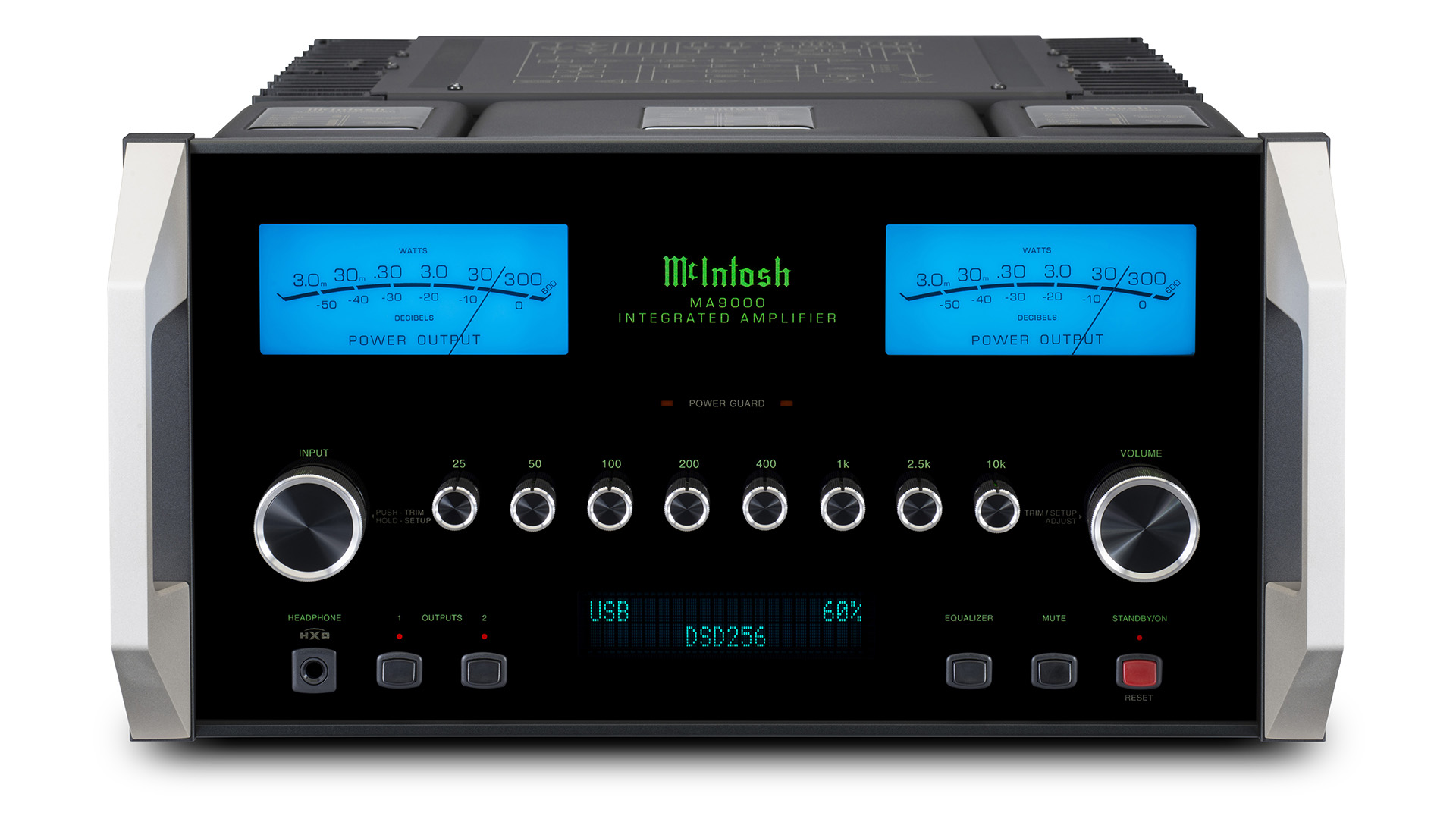
It turns out that the MA9000 has no difficulty driving any of these to high levels. If anything, it sounds even more muscular than its impressively high power figure suggests. Rarely have we heard an amplifier that sounds so in control and composed.
We play The Battle from Hans Zimmer’s Gladiator OST and the McIntosh handles this demanding piece without breaking sweat. The volume levels are high, yet there’s absolutely no sign of stress; the unit simply gets on with the job with the minimum of fuss.
It’s a large-scale presentation underpinned (but not dominated) by powerful, authoritative lows. It’s the kind of bass that you feel as much as hear. We’re pleased to report that those low notes are rich and tuneful.
This isn’t the most insightful amplifier you’ll find for the money. The McIntosh likes to paint in broad strokes rather than concentrate on the finer details, but it communicates the musical message well. It delivers a suitably rousing performance with The Battle, capturing the changes in dynamic intensity well.
The MA9000 has an organised presentation too, with individual musical strands tracked with confidence and never sounding confused, even when the music becomes busy.
Stereo imaging isn’t the most expansive we’ve heard, though the MA9000 is more than capable of rendering a nicely layered soundstage and locking instruments firmly in place. Image stability is absolute.
Anyone familiar with the McIntosh brand will recognise this amp’s sonic character in an instant. It’s a smooth, slightly rich presentation that places solidity and ease of listening over outright agility. If you want the last word in precision or speed you’ll have to look elsewhere.
That said, few alternatives are as easy-going as this. Long listening sessions pass without fatigue creeping in, and the McIntosh’s innate refinement and rounded nature mean that the negative aspects of poor recordings or aggressive sources tend to be tempered.
Moving to Bruce Springsteen High Hopes set once again puts the spotlight on the amp’s muscularity. The MA9000 has no trouble moving up the gears as the stadium rock version The Ghost Of Tom Joad kicks in. The McIntosh isn’t the most rhythmic of electronics but its sound remains cohesive and, most importantly, musical. There’s power and drive to spare here, and the MA9000, perhaps predictably, sounds right at home.
Yet, when the music changes down a gear, as it does with The Wall or Down The Hole, this amplifier is happy to oblige. It captures the passion and sensitivity in Springsteen’s gritty voice well, conveying the music’s low-key but heartfelt message superbly.
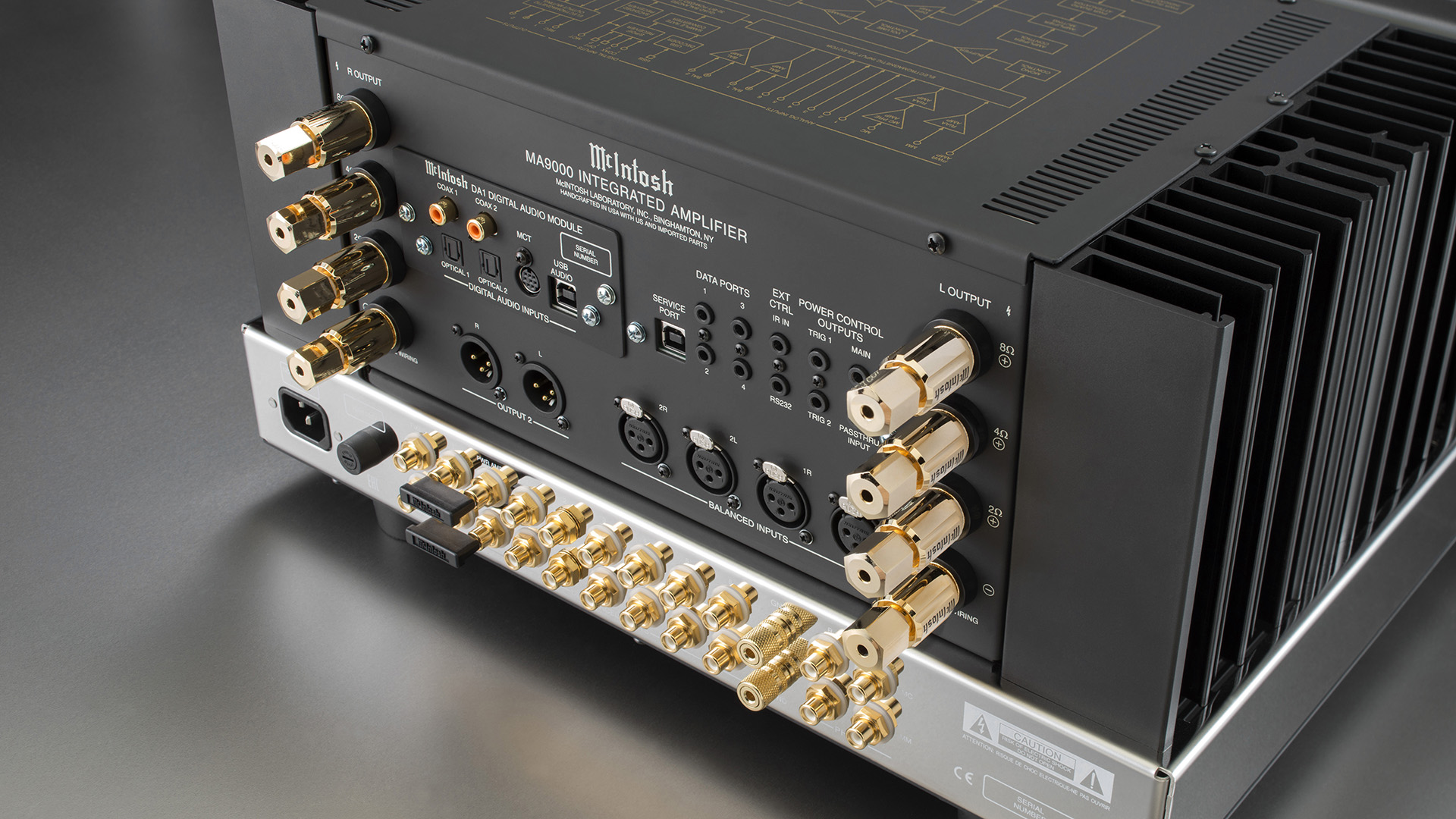
We switch to records and are pleased by the quality of this amplifier’s phono section. Both the moving magnet and moving coil sections are decently quiet and have enough gain for the cartridges we’re using. The amp’s appealing character shines through, though there’s the expected subtle drop in outright clarity compared to the line stages. This performance will be good enough for all but the most committed of vinyl purists.
We play a range of music from Bob Marley’s Catch A Fire and Four Tet’s There Is Love In You to Beethoven’s Fifth Symphony, and the McIntosh sounds happy regardless. Despite all the power on tap, this brute also has a sensitive side. It has enough finesse not to bulldoze through tracks that require subtlety, coming across with a surprising lightness of touch when required.
The story is similarly positive with the digital inputs. While Chord’s exceptional Hugo 2 DAC delves even more in the way of fine detail and rhythmic precision, the McIntosh’s digital module still produces a pleasing, well-rounded performance.
It’s entirely in keeping with the sound we hear through the line-level inputs and delivers enough in the way of detail and expression to keep us listening. The digital section also works seamlessly between file types, swapping between hi-res PCM and DSD without issue.
We spend some time listening to the amplifier with headphones. We use Focal’s closed-back Stellias, Grado’s RS1s and the T1s from Beyerdynamic without issue. All perform as well as we would hope.
The MA9000 is a truly complete product in the way that none of the additional features – phono stage, digital inputs or headphone output – perform as though they were afterthoughts. Every one of these works well, retaining the positive traits of the line-level inputs. That’s a difficult feat on a single box product such as this.
Verdict
We like the MA9000 a lot. It isn’t the last word in transparency or rhythmic drive, but remains a lovely thing to use and listen to. If you’re in the market for a top end do-it-all integrated amp, make sure you listen to this one. You may just fall in love.
SCORES
- Sound 4
- Features 5
- Build 5
MORE:
What Hi-Fi?, founded in 1976, is the world's leading independent guide to buying and owning hi-fi and home entertainment products. Our comprehensive tests help you buy the very best for your money, with our advice sections giving you step-by-step information on how to get even more from your music and movies. Everything is tested by our dedicated team of in-house reviewers in our custom-built test rooms in London, Reading and Bath. Our coveted five-star rating and Awards are recognised all over the world as the ultimate seal of approval, so you can buy with absolute confidence.
-
spongebobsquarepants I can't believe there's no mention of the remote.Reply
I've had a MA9000 for a few months now, and love everything about it except the remote.
You would think for the price the remote would be less cumbersome, have less useless buttons. -
992Sam Good review, but I think you grossly under rate this integrated amp when compared to other integrated options.. I can honestly say after a year of looking and listening. it stood out as the cleanest, and smoothest sounding unit for under $20,000... You had to really get into the high end boutique brands that cost 2 times as much. The built in DA-2 DAC card is quite decent but not intended to be the final word in DACs (I use a PS Audio PerfectWave DAC) but as far as the over all sound when playing SA/CD and other audio sources, this unit is just pure sweetness! Build quality wise, it's second to none, and looks wise even more so a stand out work of art. I give it 5 stars...Reply

